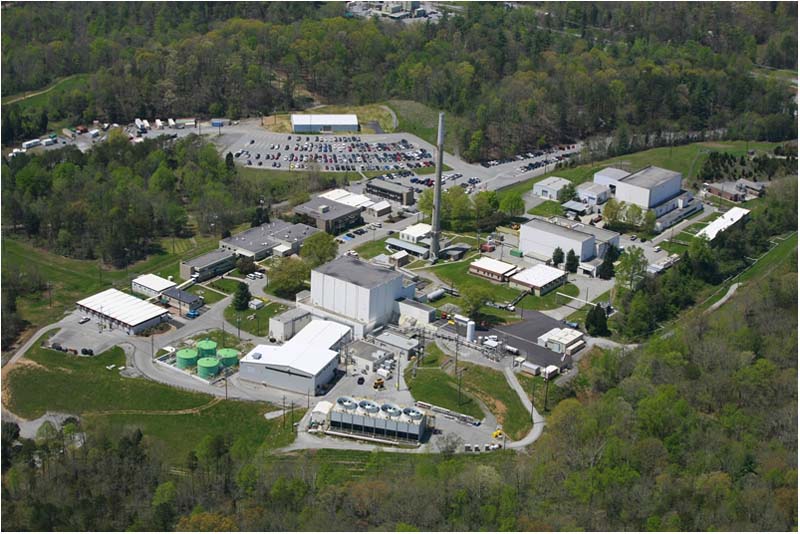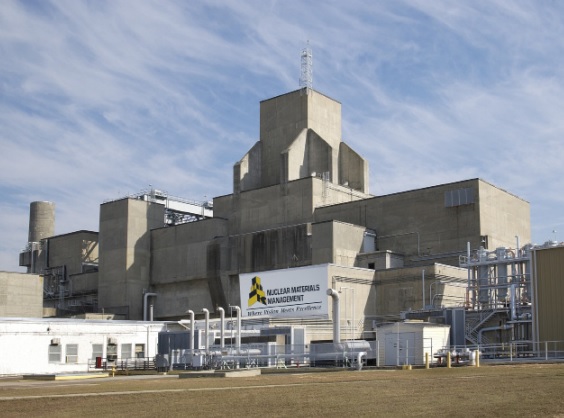Restarting Plutonium Production for Space Exploration
When the K reactor at the Savannah River Site (seen above) was shut down, the United States lost the ability to produce a very important item for deep space exploration -- Plutonium-238. This isotope was used in RTG's or Radioisotope Thermal Generators, which develop electric power from the heat developed by the decay of the plutonium. They have no moving parts and are ideal devices to power and to heat spacecraft, as well as the instrument packages and research stations left on the moon by six Apollo missions (referred to as the "ALSEP" package.) With the loss of K reactor, the US had to either face a dwindling stockpile, or take other action.
Today at the American Nuclear Society Winter Meeting, I had the privilege to listen to several speakers during the session entitled "Reestablishing Pu-238 Production in the United States," who laid out how we use this valuable material in space exploration and why it's so important for this exploration that we have it. Here are some details from just one of these fine presentations.
The Department of Energy's Rebecca Onuschak led off by telling those assembled that RTG's have been used on six moon missions, eight orbital satellites, five vehicles or spacecraft sent to Mars and on eight deep space missions to the outer planets or toward the sun. They're required both for power for the craft (in one form) and for heating the craft (in another form,) and not being damaged by the cold or vacuum of space and having no moving parts, they require no operational input and are exceedingly reliable. She mentioned the well-known Pioneer, Voyager and Galileo spacecraft as well as the Curiosity rover on Mars as top examples in the public mind which also have plutonium power.
Her description of "why plutonium?" for space craft was simple; it has a half life of over 87 years, making it long lived, and it has a fairly high specific power used in RTG's of roughly .57 watts per gram of material. Better, the material is primarily an alpha emitter (fairly large, slow particles that are easily blocked) so that handling and storage is not a major concern. In fact, this material, she says "was not chosen in spite of any safety concerns, but rather because it is highly inherently safe."
The units presently in use have a designed standard life of 17 years, but in fact the units on the Voyagers from the 1970's are still operating, meaning their ultimate service life is not known. These units develop about 110 watts of power using 768 thermocouples; thermocouples contain two dissimilar metals which, in the presence of heat, will develop a tiny voltage - thus the source of electric power for the craft when the hundreds are added together.
Onuschak then detailed the fact that since the shutdown of K reactor we have had to use either stockpiled or Russian material, and with these materials now dwindling and degrading the US was forced to redevelop its capacity to produce Pu-238 on its own. So, a project was launched in Fiscal Year 2011 with NASA funding to investigate how this would be done; it was determined that existing reactors at Department of Energy (DOE) labs would be used to irradiate Neptunium-237 (as was done before at K reactor) from which the produce it Pu-238. This plan would use all existing resources; the Np-237, itself a byproduct of the old nuclear weapons program, is stored in abundance at Idaho National Lab. "We have hundreds of kilograms of neptunium," she said. This material will be repackaged in shipment drums, sent to the Oak Ridge National Lab (ORNL) and made into "irradiation targets" which will then be placed in the HFIR or High Flux Isotope Reactor for the purpose of converting the Np-237 into Pu-238. Sometime later, the ATR or Advanced Test Reactor at Idaho National Lab will join in.

HFIR, courtesy ORNL
Onuschak believes that the ultimate production of Pu-238 will be 1.5 kg per year, which fills all of NASA's needs for the expected flights. Further, if the Pu-238 is exceptionally high quality (in other words, above 83.5% concentration of Pu-238) then it's planned to mix the new material with some of the left over plutonium to "stretch" it -- an important way to use legacy stocks that have degraded in quality during a long period of inactivity. She points out that this entire process uses existing facilities and established procedures, requiring no new large facilities or technologies. What's required is to adapt the production process to a very different kind of reactor than the large, heavy water moderated tank type reactor (K reactor) originally used.
The new plutonium is expected, she says, in the time frame 2019-2021 -- which is just in time for deployment in the expected NASA Mars Rover 2020 project, intended to explore Mars with a whole new array of tools and experiments intended to look more deeply than ever before at the Red Planet for signs of its history and clues about its future. With this new pipeline of material for safe, long-term space power sources NASA will stand ready to fulfill its mandate for space exploration - thanks entirely, though, to the efforts of the Department of Energy and our network of National Laboratories.
 Will Davis is Communications Director and board member for the N/S Savannah Association, Inc. He is a consultant to the Global America Business Institute, a contributing author for Fuel Cycle Week, and writes his own popular blog Atomic Power Review. Davis is also a consultant and writer for the American Nuclear Society, and serves on the ANS Communications Committee. He is a former US Navy reactor operator, qualified on S8G and S5W plants.
Will Davis is Communications Director and board member for the N/S Savannah Association, Inc. He is a consultant to the Global America Business Institute, a contributing author for Fuel Cycle Week, and writes his own popular blog Atomic Power Review. Davis is also a consultant and writer for the American Nuclear Society, and serves on the ANS Communications Committee. He is a former US Navy reactor operator, qualified on S8G and S5W plants.


